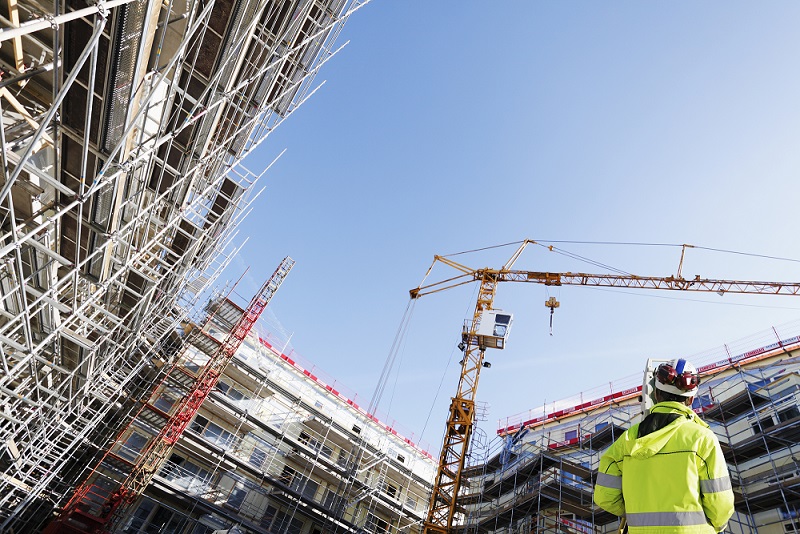
How will Technology Impact the Construction Industry?
The construction industry has long been criticised for its reluctancy to change and adopt new technologies.
Projects are rarely delivered on time and rarely stick to budget, giving the industry more than a bad name. As a result of the longstanding problems, the industry has seen a shrinking work force with bleak prospects.
In Mark Farmer’s Modernise or Die, he describes the situation as ‘more than alarming’ and says that the need for change is essential.
But who wants to make the first move?
We’re not talking about a problem that can be fixed with a couple of new gadgets. To make the revolutionary change that the construction industry needs, it requires a huge operational and cultural shift.
The change must start with BIM.
BIM as the Driving Force for Change
The government has recognised that in order for a change to occur, there needs to be a strong synchronised action. And for that to happen, there needs to be an incentive.
So, they introduced the 2016 BIM government mandate.
BIM isn’t a new concept, it has been around since the early 2000s, but up until recently it had gone largely ignored.
The government mandate aimed to address this by specifying that all public sector building projects worth more than £5 million must be BIM Level 2 compliant by April 2016.
It’s hoped that this will give the industry a push in the right direction and pave the way for smaller firms in the private sector to follow suit.
BIM and The Power of Technology
BIM in itself isn’t technology, it’s a way of working that harnesses the power of technology.
Through the use of a dedicated construction software such as REBIM®, contractors have access to and can update the data rich 3D models uploaded by the design teams from the very start of the design process.
The result is collaborative working which speeds up the whole project whilst also giving more accurate time and budget estimates.
Once the project is completed, the handover time can also be drastically reduced. REBIM® ensure that all of the data is correctly validated so it’s easily available and ready to use by Operations & Management.
It is hoped that by becoming more digitalised, the industry will naturally address the problems which are currently plaguing the construction industry.
It is also hoped that once the construction industry has made this initial change, it will be able to keep up with future technological developments.
The Latest Technology in the Construction Industry
BIM is seen as the first major step construction companies must take to modernising.
Once these new processes are put in place, it’s possible for companies to start incorporating other technologies which will further advance the industry.
We’re already seeing those at the forefront of innovation make use of these exciting new opportunities.
Drones in Construction
It’s not hard to see how useful a drone could be in construction.
One of the main ways they can be used is to conduct site surveys as they can be used to provide a birds-eye view, or should we say ‘drones-eye view’. The results are much quicker and more accurate as they eliminate human error. They also improve heath and safety as they decrease the amount of work that has to be done manually.
They can also be used as a way of maintaining constant contact at worksites, as they can send real-time video footage of the site to other employers, managers or stakeholders.
This can also be used to improve security, as they can almost act as CCTV cameras protecting the site from theft and vandalism.
Wearables in Construction
Perhaps a step further on than drones are wearable technologies.
Some of these include things to be worn by the individual to improve efficiency and health and safety, such as heating and cooling jackets and ‘smart caps’ which monitor brain waves to sense fatigue.
But there are also advancements such as the Microsoft HoloLens which are glasses that allow a user to overlay a 3D building plan over a job site.
This allows project managers to see how things will work on site before it’s built and it gives them an opportunity to make any changes before construction officially commences.
We predict that technologies such as the HoloLens will become fully integrated within BIM in the not so distant future.
Virtual Reality in Construction
A step beyond the Microsoft HaloLens is virtual reality.
It’s now possible to fully immerse stakeholders in a 4D virtual reality model during the design and planning stages. It has been used on major projects such as an airport hotel and a zoo where they were able to use virtual reality to minimise problems such as access to site and health and safety.
Through this technology, the designers, contractors and stakeholders were all able to align their visions and wishes to achieve something that met everybody’s expectations.
The Future of the Construction Industry
Although these examples might feel a world away for those just getting to grips with BIM, the reality is that the end goal at both ends of the spectrum isn’t dissimilar.
Through the adoption of BIM and eventually the use of drones and possibly virtually reality, you are able to achieve collaborative working where everyone’s expectations of cost, time and vision are aligned.
It is through technology that the construction industry can tackle its biggest issues and pave a way for future generations of the workforce.


